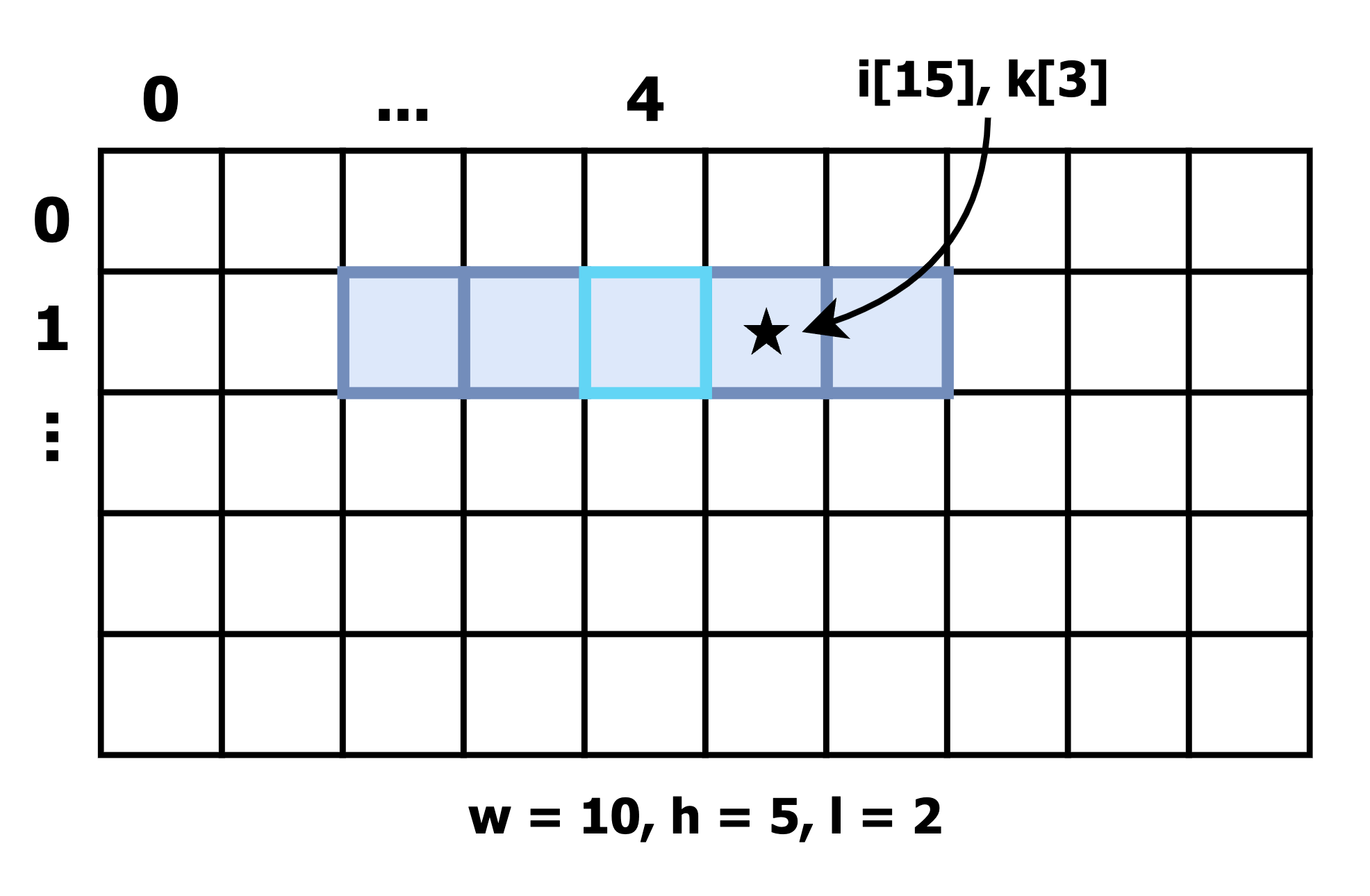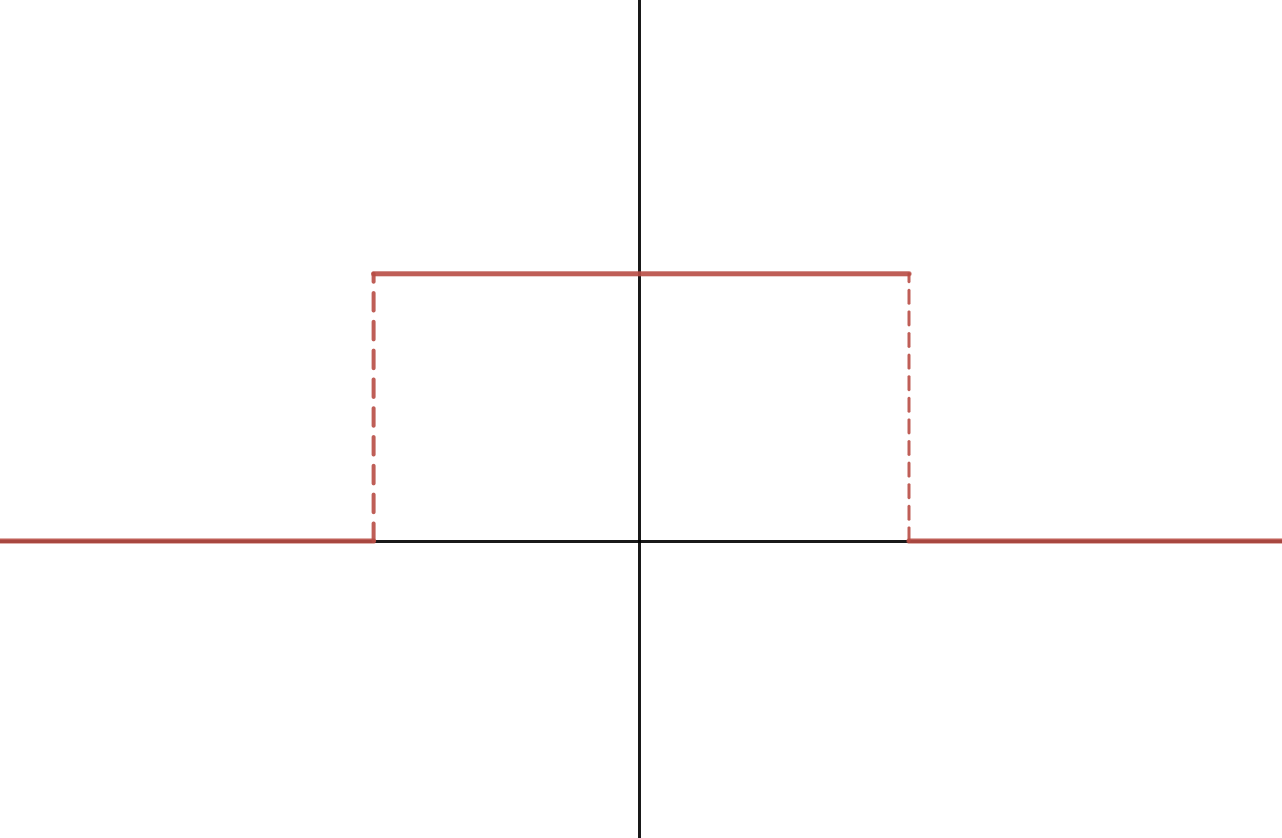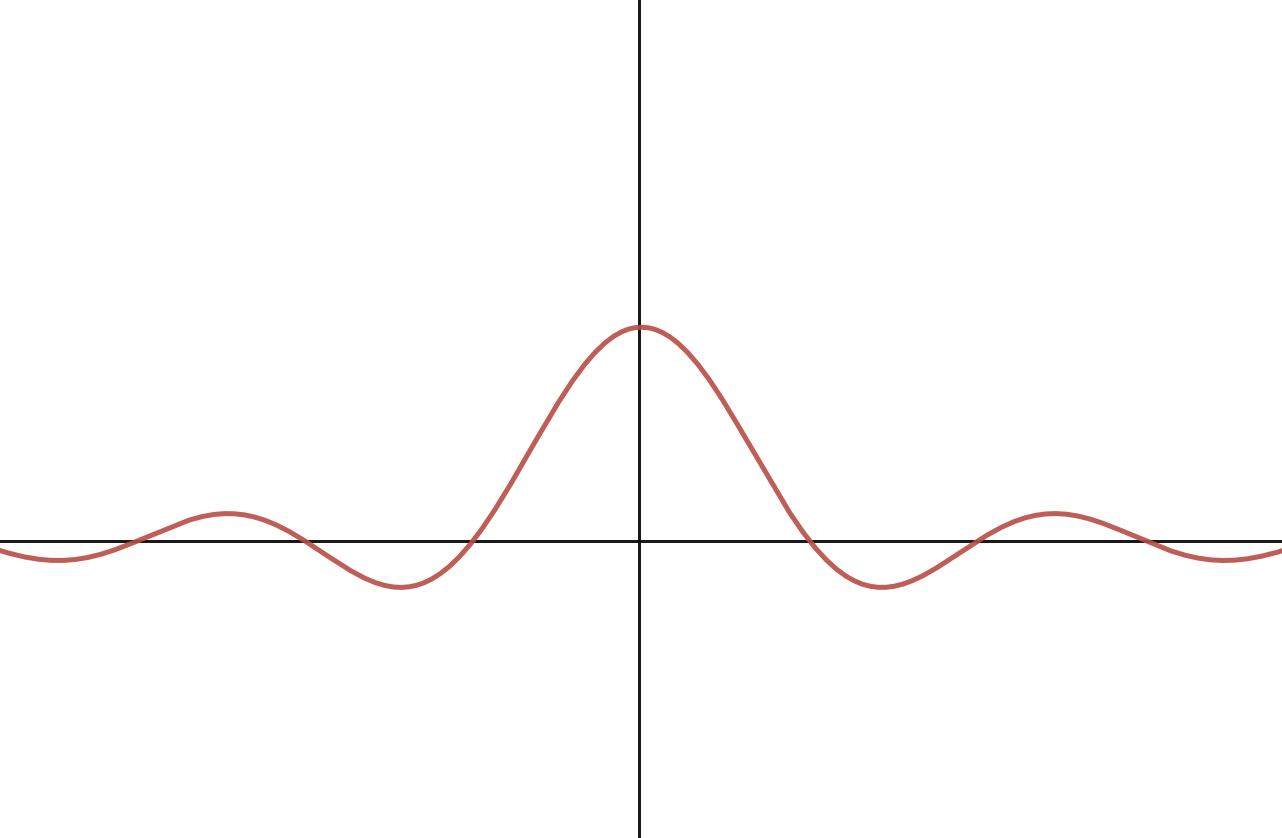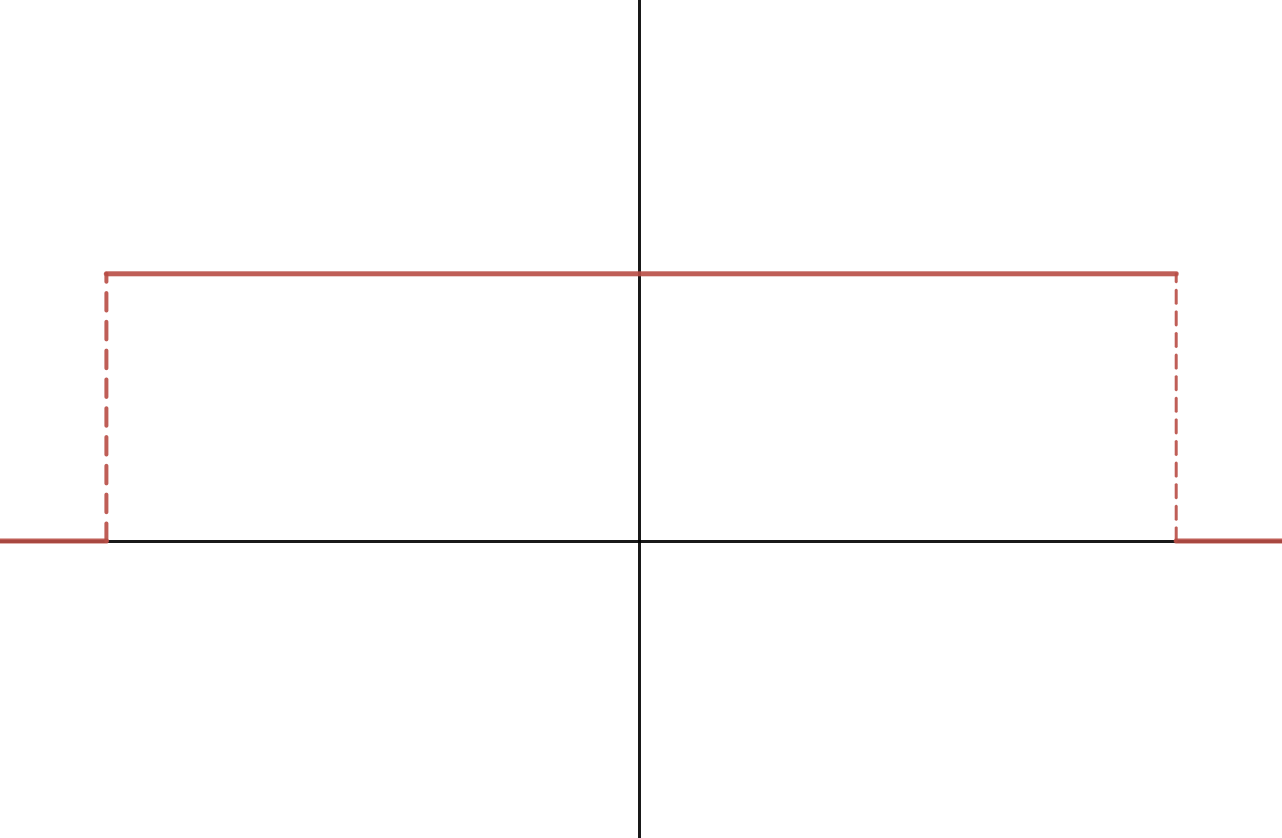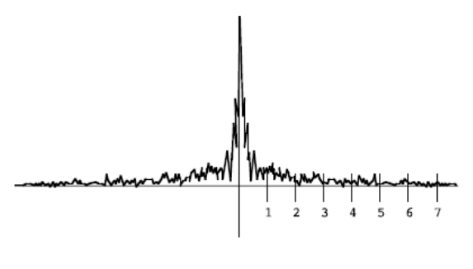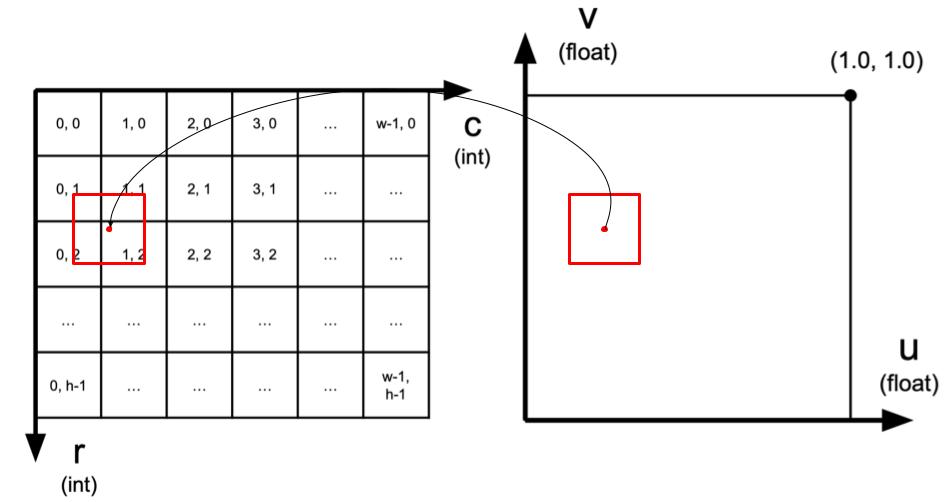Project 4: Antialias (Algo)
You can find the handout for this project here. Please skim the handout before your Algo Section!
You may look through the questions below before your section, but we will work through each question together, so make sure to attend section and participate to get full credit!
Please read the project handout before going to algo section and working on these questions!
Discrete 2D Convolution
Suppose that you are given a 1D image vector
Write out pseudocode to slide the kernel
How would you need to adjust this pseudocode if the kernel were positioned vertically instead?
Duality of Domains
Visualizing Sinc and Box Duals
Take a look at the box function in figure 5 (left) below. Its dual in the frequency domain is the sinc function, in figure 5 (right). Note that there are no labels on the axes, by design.
Draw out a sketch of the dual of the box function in figure 6. Your drawing doesn't need to be perfectly accurate; but enough to show that you understand the concept.
When you are finished, explain your group's thought process to the TA.
Approximating Sinc
What do we usually use to approximate the sinc function, and why do we have to make this approximation when translating these theoretical concepts into code?
Discuss with your group and then call over the TA to check your understanding.
Sampling in the Frequency Domain
If we're sampling a continuous function at a frequency of
Frequency Plots
Now, examine the following frequency plot of a 1D, continuous signal. If you were going to sample this signal at a rate of 8 samples per unit, to avoid aliasing, you would use what we know about the Nyquist limit to pre-filter it.
Draw out the new frequency plot after someone has performed this pre-filtering step optimally. Make sure to include any relevant amplitude and/or frequency values.
Ray Differentials for Spheres
Review: Texture Coordinates
Recall that we can express coordinates on the surface of a sphere using spherical coordinates
From Texture to Object Space
Using the equations that we found in 3.1 and the definition of
Calculating Differentials
Calculate
The following derivatives might be helpful:
Bilinear Sampling
Suppose we have texture of size
Submission
Algo Sections are graded on attendance and participation, so make sure the TAs know you're there!
